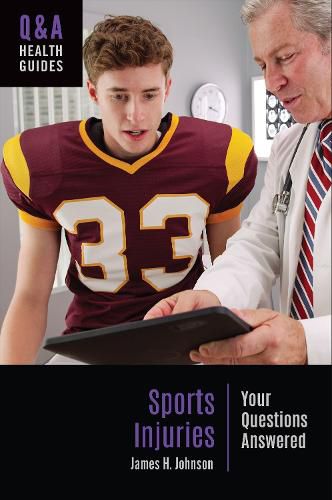Readings Newsletter
Become a Readings Member to make your shopping experience even easier.
Sign in or sign up for free!
You’re not far away from qualifying for FREE standard shipping within Australia
You’ve qualified for FREE standard shipping within Australia
The cart is loading…






This book explores how to recognize, treat, and prevent sports injuries and offers guidance on which sports and training techniques are most likely to lead to injury.
Engaging in sports has numerous health benefits, but it’s an unfortunate reality that it can also lead to injury. Some sports, such as football and cheerleading, are particularly notorious for causing harm to young athletes. Specializing in a particular sport or going too hard too fast can also lead to injury. But which injuries are most likely to occur, and how should they be treated in both the short- and long-term? When should an injured athelete consider surgery? When is it safe to get back in the game?
Books in Greenwood’s Q&A Health Guides series follow a reader-friendly question-and-answer format that anticipates readers’ needs and concerns. Prevalent myths and misconceptions are identified and dispelled, and a collection of case studies illustrate key concepts and issues through relatable stories and insightful recommendations. Each book also includes a section on health literacy, equipping teens and young adults with practical tools and strategies for finding, evaluating, and using credible sources of health information both on and off the internet-important skills that contribute to a lifetime of healthy decision-making.
Simple Q&A format makes the subject approachable and accessible to readers, allowing them to find specific information quickly and easily
Offers readers practical information about how to prevent and treat a wide variety of sports injuries
Guide to Health Literacy section helps readers improve their research and critical thinking skills
Case studies provide real-world examples of concepts discussed in the book
Common Myths section dispels popular misconceptions surrounding sports injuries and points readers toward accurate information
$9.00 standard shipping within Australia
FREE standard shipping within Australia for orders over $100.00
Express & International shipping calculated at checkout
This book explores how to recognize, treat, and prevent sports injuries and offers guidance on which sports and training techniques are most likely to lead to injury.
Engaging in sports has numerous health benefits, but it’s an unfortunate reality that it can also lead to injury. Some sports, such as football and cheerleading, are particularly notorious for causing harm to young athletes. Specializing in a particular sport or going too hard too fast can also lead to injury. But which injuries are most likely to occur, and how should they be treated in both the short- and long-term? When should an injured athelete consider surgery? When is it safe to get back in the game?
Books in Greenwood’s Q&A Health Guides series follow a reader-friendly question-and-answer format that anticipates readers’ needs and concerns. Prevalent myths and misconceptions are identified and dispelled, and a collection of case studies illustrate key concepts and issues through relatable stories and insightful recommendations. Each book also includes a section on health literacy, equipping teens and young adults with practical tools and strategies for finding, evaluating, and using credible sources of health information both on and off the internet-important skills that contribute to a lifetime of healthy decision-making.
Simple Q&A format makes the subject approachable and accessible to readers, allowing them to find specific information quickly and easily
Offers readers practical information about how to prevent and treat a wide variety of sports injuries
Guide to Health Literacy section helps readers improve their research and critical thinking skills
Case studies provide real-world examples of concepts discussed in the book
Common Myths section dispels popular misconceptions surrounding sports injuries and points readers toward accurate information